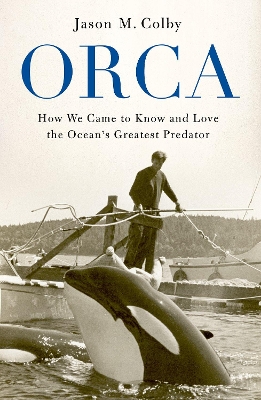
Beth C.
Written on Aug 23, 2018

Bookhype may earn a small commission from qualifying purchases. Full disclosure.
Orcas are the most profitable and controversial display animal in history, and since the release of the documentary Blackfish in 2013, millions around the world have focused on their plight. Yet no historical account has explored how we came to care about killer whales in the first place.
In Orca, Jason Colby tells the exhilarating and often heartbreaking story of how people came to love the ocean's greatest predator. Historically reviled as dangerous pests, killer whales were dying by the hundreds, even thousands, by the 1950s—the victims of whalers, fishermen, and even the US military. In the Pacific Northwest, fishermen shot them, scientists harpooned them, and the Canadian government mounted a machine gun to eliminate them. But that all changed in 1965, when a Seattle
entrepreneur named Ted Griffin became the first person to swim and perform with a captive killer whale. The show was a hit, and he began capturing and selling others, including Sea World's first "Shamu."
Over the following decade, live display transformed popular and scientific views of Orcinus orca. The public embraced killer whales as charismatic and friendly while scientists enjoyed their first access to live orcas. In the Pacific Northwest, these captive encounters reshaped regional values and helped drive environmental activism, including Greenpeace's anti-whaling campaigns. Yet even as Northwesterners taught the world to love whales, they came to oppose their captivity. So when Sea
World attempted to catch its own killer whales, Northwesterners would fight for the freedom of a marine predator that had become a regional icon.
With access to previously unavailable documents and interviews, Colby offers the definitive history of how the feared and despised "killer" became the beloved "orca" and what that means for our relationship with the ocean and its creatures.
